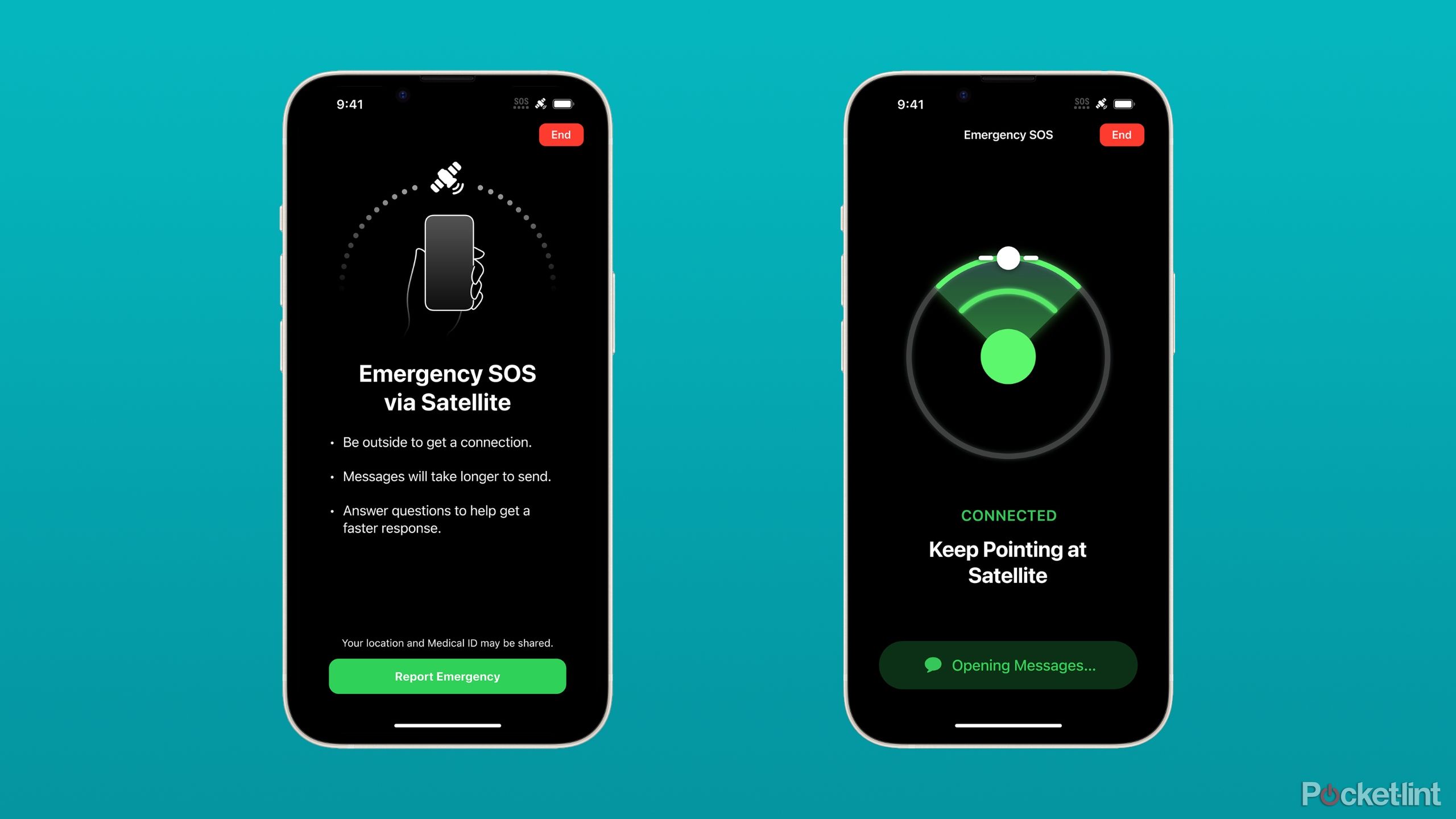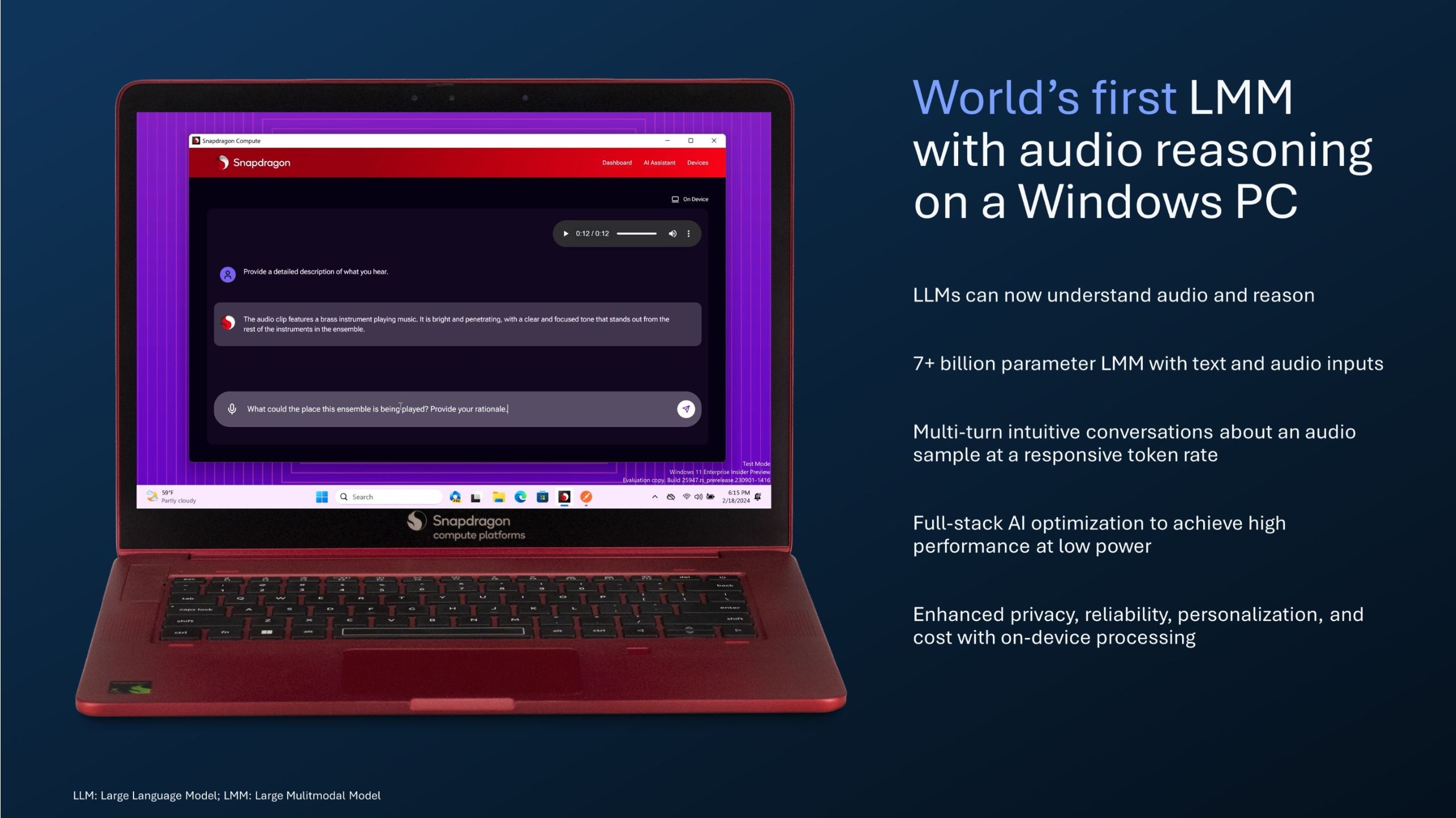The push to integrate artificial intelligence into the smartphones and computers we use every day is continuing in 2024. Qualcomm, creator of the chips that could very well power the phone you’re holding right now, is announcing a new service and two new products at Mobile World Congress 2024 designed to further support the AI features that are already running on devices like the Samsung Galaxy S24 line, and hopefully get more phone and PC makers to do the same.
Both of Qualcomm’s big platform announcements last year were produced with AI in mind. The Snapdragon 8 Gen 3, on top of being more performant and power efficient, features an improved Hexagon Neural Processing Unit designed to support running generative AI models on-device. The Snapdragon X Elite, Qualcomm’s new PC platform that will presumably power Microsoft’s next-generation Surface devices in 2024, was similarly focused on processing AI requests faster than the competition.
Qualcomm is building on those advancements with its AI Hub — a library of AI models optimized to run on Snapdragon chips, new 5G modems and Wi-Fi systems that have been made more efficient thanks to AI…
At MWC, Qualcomm is building on those advancements with its AI Hub — a library of AI models optimized to run on Snapdragon chips, new 5G modems and Wi-Fi systems that have been made more efficient thanks to AI, and multiple examples of AI research to back up its claims that you can run complex generative AI on Android phones today. For the details of all of those and more, read on below.
Qualcomm Snapdragon 8 Gen 3: Detailing the 2024 flagship mobile platform
This is everything you need to know about the Qualcomm Snapdragon 8 Gen 3 mobile platform and what it means for 2024 flagship smartphones.
Qualcomm launches an AI Hub for developers
All for free?
The AI Hub is a “a comprehensive AI model library” of over 75 different AI and generative AI models, built to help developers “quickly and easily integrate pre-optimized AI models into their applications,” according to Qualcomm. Adding the models in some cases should be as simple as adding a few lines of code, Qualcomm claims, and they’re all explicitly optimized to run efficiently on Qualcomm’s Snapdragon platforms.
Qualcomm hopes the move will encourage developers to build AI features into applications that are inherently more private because they can be run entirely on-device and don’t need to make the round trip to a server in the cloud. This also means you could take advantage of cutting-edge AI features like live translation or transcription without having to have an internet connection.
AI available anywhere?
Besides Qualcomm’s own AI Hub website, the model library is also available today on GitHub and Hugging Face. AI Hub will be expanded over time with new models, and Qualcomm says developers can sign up today to start building apps with the models on cloud-hosted devices.
Apple / Pocket-lint
The new Snapdragon X80 5G Modem-RF
Satellite support inside
While on paper a new 5G modem isn’t as exciting as the CPU and GPUs that keep your smartphone feeling fast and powerful, Qualcomm’s new Snapdragon X80 5G Modem-RF has some features that could prove useful for this year’s Android phones.
Specifically, in this case, because of integrated support for “NB-NTN satellite communications,” theoretically enabling the same kind of messaging, calls, and location sharing in remote environments that iPhones are capable of through Apple’s Emergency SOS feature, without having to rely on another chip.
AI takes the 5G wheel
Of course, AI is here too. Qualcomm’s new Snapdragon X80 5G Modem-RF uses a 6-antenna structure that’s ready for 5G-Advanced (the new and improved version of the 5G network standard carriers are preparing for) and has a dedicated AI processor that the company claims will “improve data speeds, latency, quality of service (QoS), coverage, location accuracy, spectrum efficiency, power efficiency and multi-antenna management.”
Essentially, by allowing on-device AI to handle when your phone switches cell towers, for example, or how it sends and calls for data from its carrier network, it’s able to improve the consistency and quality of the internet connection on your phone.
Qualcomm brings AI to Wi-Fi with the FastConnect 7900
Are you tired of AI yet?
Qualcomm is bringing those same AI-powered improvements to the other instance of wireless connectivity on your smartphone. The Qualcomm FastConnect 7900 system, which bundles together Wi-Fi, Bluetooth, and Ultra Wideband, uses AI to “[adapt] to specific use cases and environments, delivering meaningful optimizations across power consumption, network latency and throughput.”
In short, the new FastConnect 7900 system should lean even less on your smartphone’s already limited battery, while enabling new kinds of built-in features like digital keys, object finding (like you might find on an Apple AirTag or Samsung Galaxy SmartTag 2), and indoor navigation.
A new flavor of Wi-Fi?
If that’s not exciting, maybe Wi-Fi 7 will be. Qualcomm’s new chip supports Wi-Fi 7, the next-generation wireless standard that improves data rates, efficiency, and capacity. In fact, Wi-Fi 7 supports three bands; 2.4GHz, 5Ghz, and 6Ghz, meaning less congestion and faster load times when you’re connected to a Wi-Fi 7 router.
Qualcomm
On-device generative AI research
Let the LLaVa flow
To prove that the new platforms Qualcomm has already released and the optimizations it’s announcing at MWC actually make a difference, the company is also demoing a Large Language and Vision Assistant (LLaVa), the first Large Multimodal Model of its kind to run on an Android phone. The prototype assistant can use multiple types of data inputs and is able to engage and multi-turn conversations about whatever you send it.
The interface and interactions Qualcomm shows off in its demo video look a lot like what’s currently possible with the ChatGPT app. The key difference is, rather than pinging OpenAI’s servers for analysis and responses, LLaVa runs entirely on your smartphone.
Qualcomm
AI that can hear
Qualcomm was able to run a similar demo on a PC using its Snapdragon X Elite platform. The company’s research team devised a “7+ billion parameter LMM” that accepted text and audio inputs and was able to generate lengthy conversations about them, all on a single device. While this might feel less impressive than achieving the same thing on a smartphone, it’s a key demo for PC makers, especially as Microsoft continues to push for 2024 to be the year of the “AI PC” with Microsoft Copilot, and one assumes, its own hardware later this year. Some level of on-device AI assistant is very possible now.
Trending Products


















